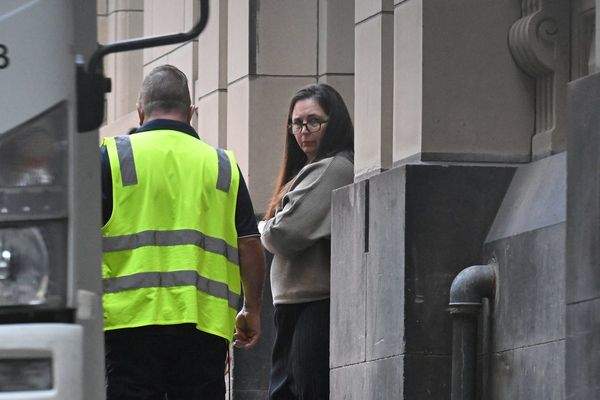
An ocean mapping expedition conducted by the National Oceanic and Atmospheric Administration explored the resting site of the World War II aircraft carrier USS Yorktown (CV-5) and found that a mural painted inside the ship was still intact after nearly 83 years underwater.
Shortly after the Battle of Midway, an already crippled USS Yorktown was hit by a torpedo attack from a Japanese submarine. The damage was significant enough that the US Navy deemed repairs impossible and the ship sank in the Pacific.
The sunken aircraft carrier was rediscovered in 1998 by oceanographer Robert Ballard.
The NOAA's exploration team explored the ship's hangar deck and discovered a mural, titled "A Chart of the Cruises of the USS Yorktown," painted on the wall of one of the ship's elevator shafts.
Before the explorers rediscovered the painting, it had only been partially visible in historical photos of the ship.
The 42 by 12-foot mural displays a world map that tracks the various voyages the ship undertook during its time in service.
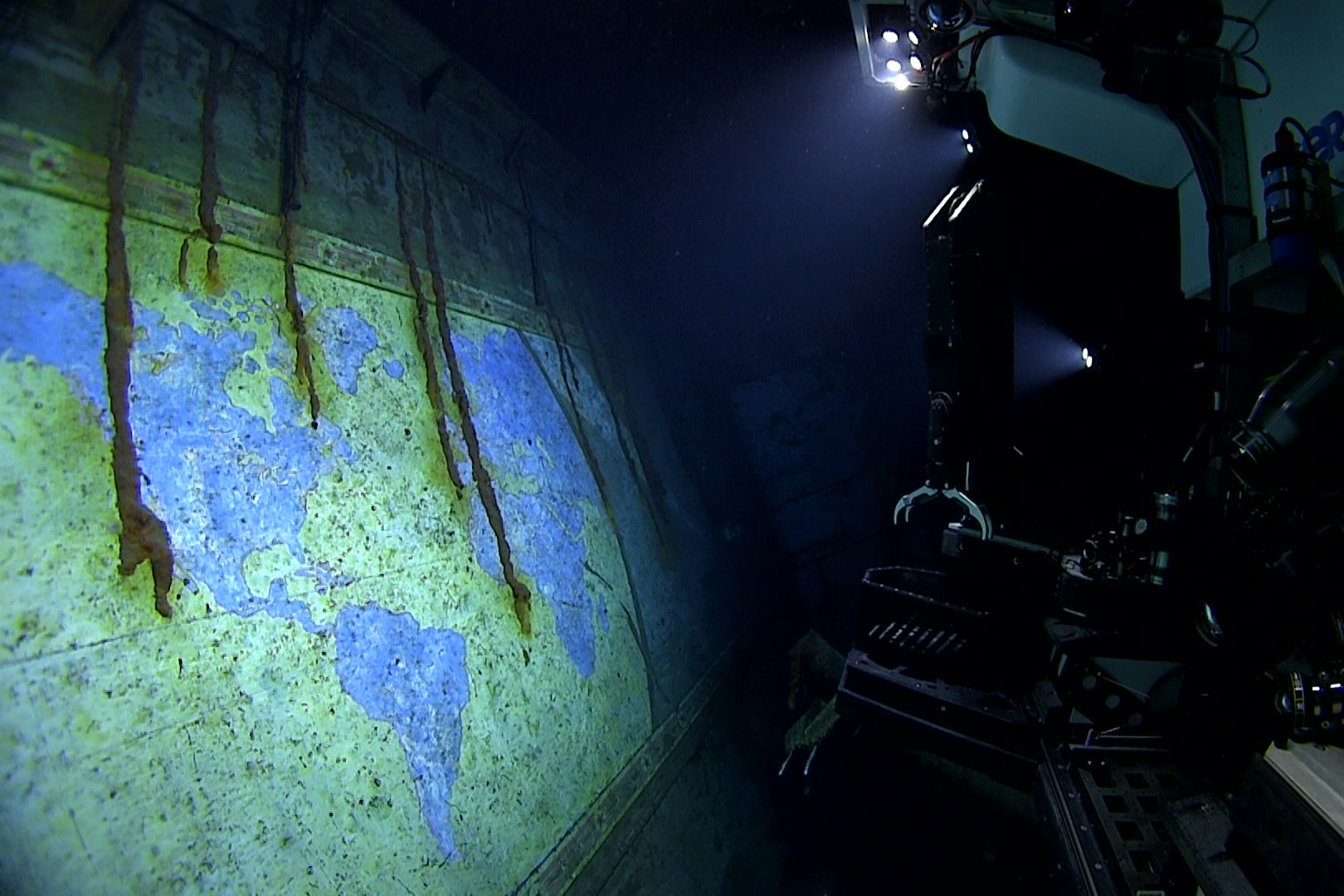
The hand-painted artwork wasn't the only surprise awaiting the explorers in the depths of the Yorktown; the NOAA team also found an old car in the aft hangar of the ship.
According to NOAA, the vehicle is a 1940-1941 Ford Super Deluxe "Woody," colored black. The words "SHIP SERVICE_NAVY" are written on part of its front plate.
NOAA researchers believe the car may have been used by Rear Admiral Frank Jack Fletcher, Captain Elliott Buckmaster, or other crew for conducting business while the ship was in foreign ports.
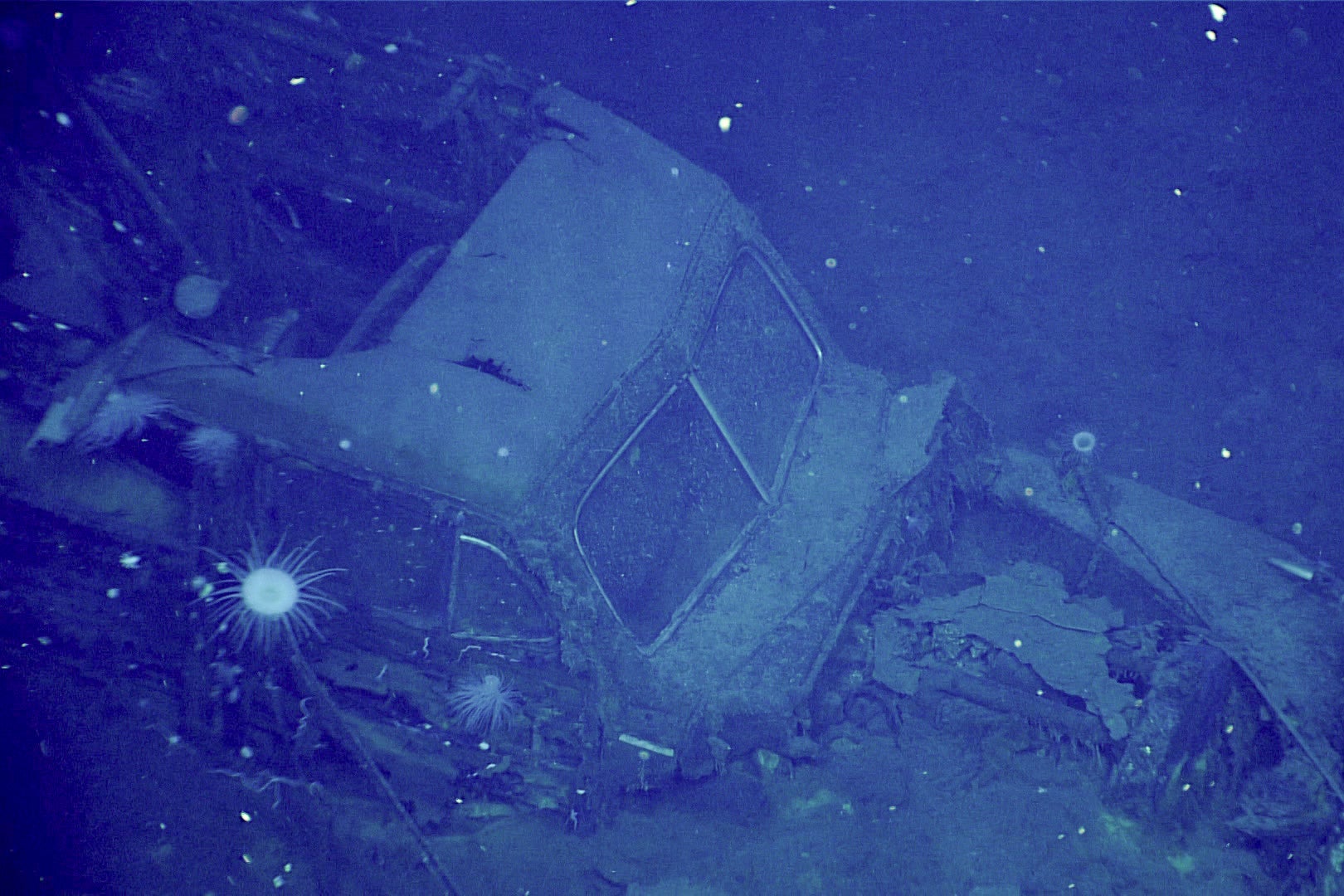
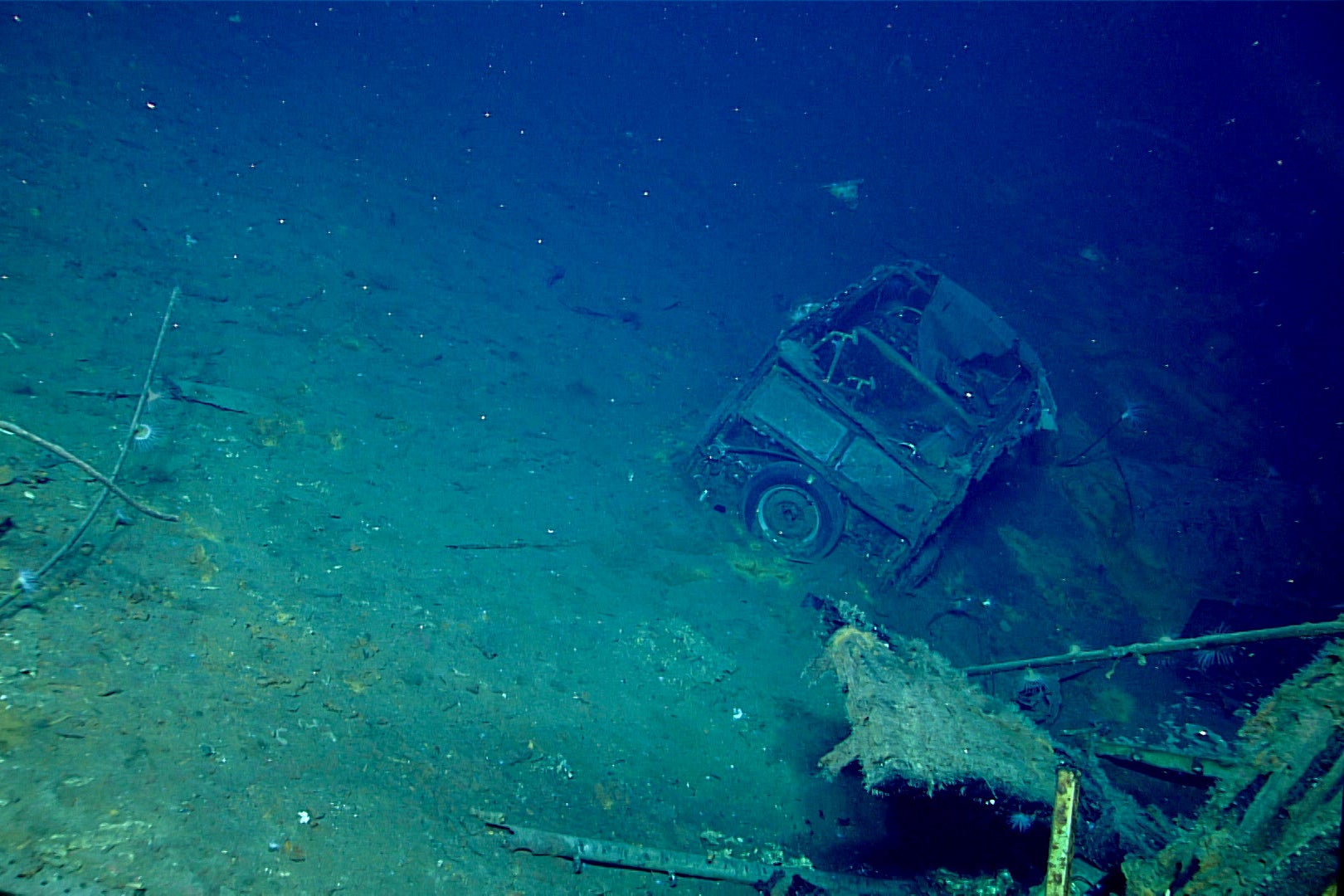
The car's existence on the ship is something of a curiosity. In May 1942, the Yorktown was severely damaged by Japanese aircraft in the Battle of the Coral Sea, after which it sailed back to Hawaii, where it stayed in dry dock at Pearl Harbor for two days for rapid repairs before it went to participate in the Battle of Midway.
During the battle, the Yorktown was again damaged by Japanese aircraft, and developed a list to its port side — meaning the ship began to lean to one side — at which time the crew jettisoned much of its heavy equipment, like aircraft and anti-aircraft guns.
But they didn't jettison the car. The reasons for keeping the car onboard the ship at a time when even anti-aircraft guns and airplanes were being tossed over may remain a mystery.
The NOAA's dive also found the first underwater examples of the aircraft on the Yorktown that had been jettisoned during the Battle of Midway.
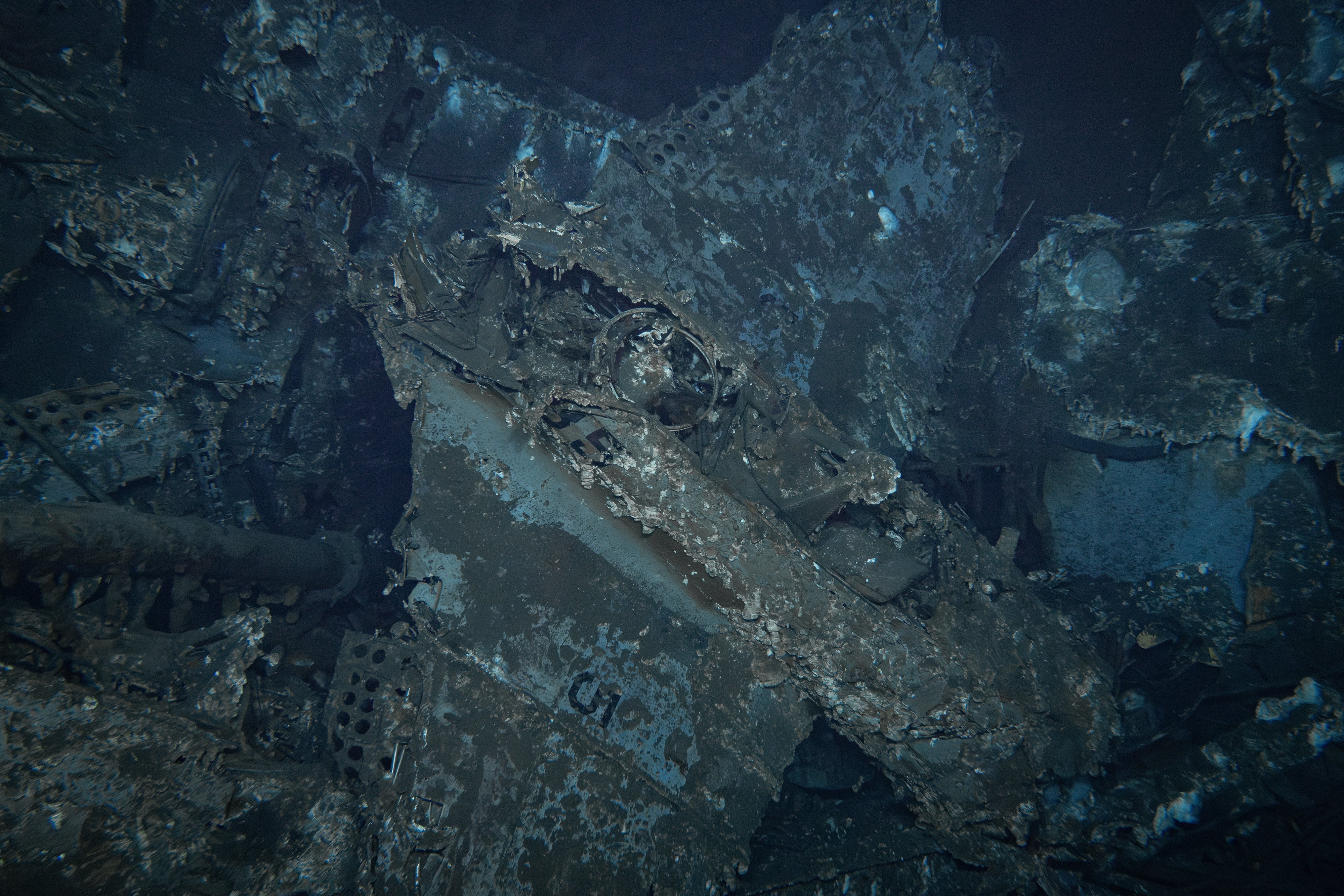
While exploring a heavily obstructed elevator shaft, the NOAA's remote vehicle entered a hangar and found the remains of at least three Douglas SBD Dauntless dive bombers.
Records from the battle note that the Yorktown recovered a pair of aircraft from the USS Enterprise that had been barely damaged. The aircraft were moved down onto a hangar deck and later suffered fire damage when Japanese bombs hit the Yorktown.
Research is still ongoing to determine if the airplanes found in the hangar are those recovered from the Enterprise.
Other parts of various aircraft were also located among the wreckage.
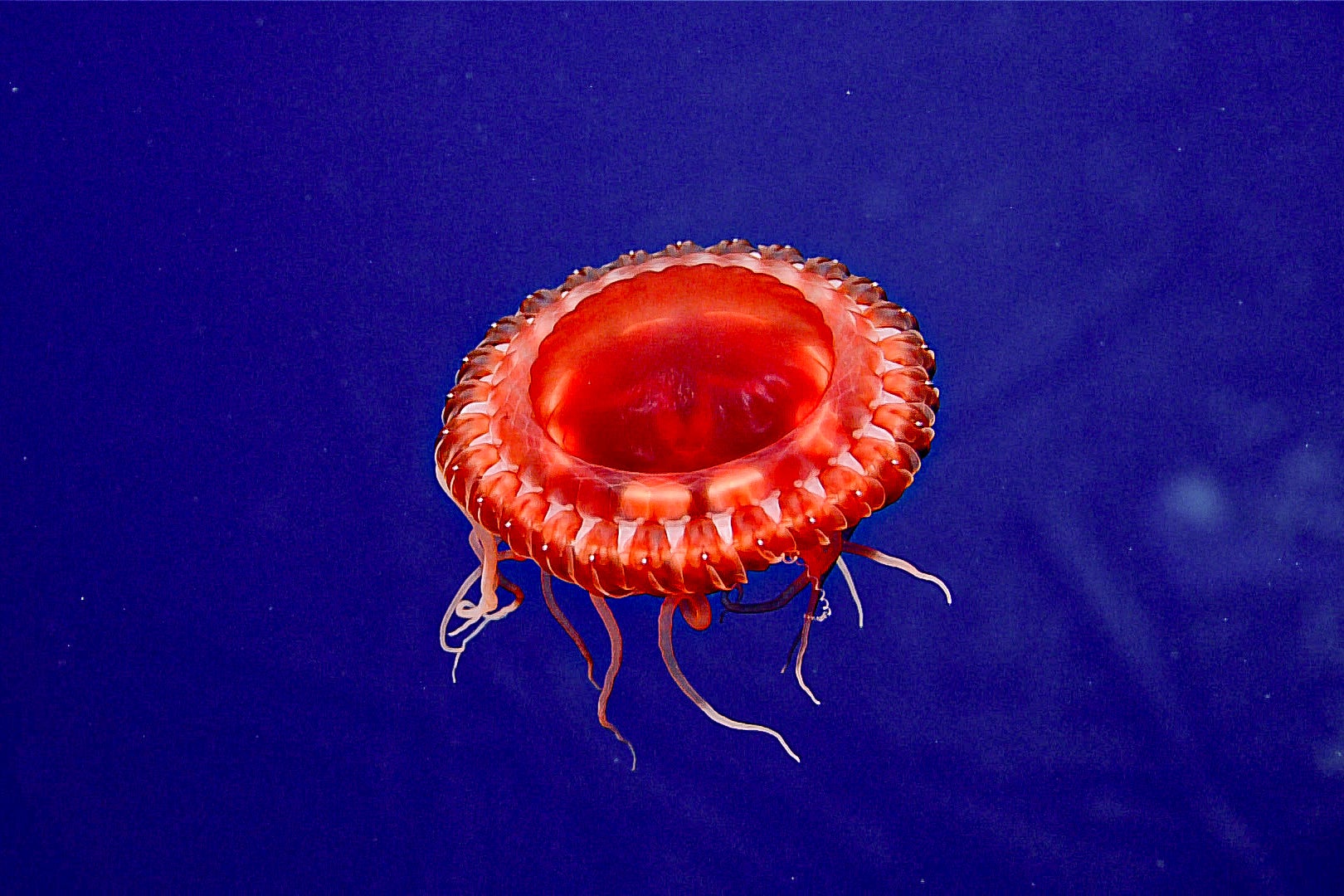
In addition to the remnants of battle, the NOAA may have also discovered a new species of jellyfish. The dive team encountered a small, bright red and white jellyfish, though it is unclear if it's a new or an existing species.
Tubeworms and anemones were also found attached to the ship's hull. Sunken ships often provide structures for undersea life to attach and grow onto.
In 2023, the site of the Yorktown's wreck was designated as a Site of Extraordinary Character by the US Navy.
